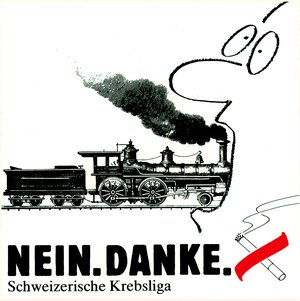
Unternavigation
Healthcare Leagues
The first healthcare leagues date to the turn of the 20thcentury and were (and in part still are) dedicated to addressing specific illnesses. These leagues have provided various kinds of support, launched prevention campaigns, and supported research into these illnesses.
In the transition from the 19th to the 20th century, the hygiene movement brought together various efforts to promote healthy living conditions and ways of life. This movement emerged against a backdrop of public complaints about the lack of hygiene in the densely populated districts workers inhabited in European industrial cities. Research findings about the transmission of diseases like cholera and typhus also led scientists, physicians and politicians to call for improvements in hygiene. Corresponding demands were soon supported by the health leagues, charitable associations which sought to prevent the spread of infectious diseases, limit the consumption of alcohol, and help those affected. Over the course of the 20th century, these leagues increasingly promoted preventive measures to combat addiction or the spread of illnesses. The health leagues worked with local, cantonal and national authorities, and while some received state subsidies, they were largely financed through donations.
Combatting Alcohol Consumption
In the 19th century, numerous initiatives were launched to moderate or restrain the consumption of alcohol. By the 1880s, there were organisations which sought to reduce schnapps consumption among the working classes by spreading the idea of abstaining from drinking. By contrast, wine consumption among the middle classes was considered less of a problem. Actions taken by such organisations included informational campaigns and legal measures, including restricting the alcohol trade by imposing taxes on it, or through outright bans such as that imposed on absinthe (1908-2005). Organisations engaged in combatting alcohol consumption included the Swiss Blue Cross (founded in 1877), the Alcohol Opposition Alliance (1890), the Good Templars (1892), the Catholic Teetotalers League (1895), the Socialist Teetotalers Association (1900) and the Swiss Federation of Abstinent Women (1902). The focus only on abstinence became less relevant after the First World War, but many temperance organisations continued to be active. By the 1970s, some also focused on narcotics, and were active both in counselling addicts and in trying to prevent addiction itself.
Establishing the First Health Leagues
In the first half of the 20th century, the healthcare leagues primarily took on tasks outside the purview of the healthcare system. The Central Commission against Tuberculosis, for example, was set up in 1903 in order to coordinate the regional tuberculosis leagues and to promote the foundation of sanatoria and further associations. After the First World War, the tuberculosis leagues merged to form the Swiss Association against Tuberculosis and Pulmonary Diseases.
In 1907, the Société de la lutte contre le cancer was founded in Geneva; it merged with the Swiss Association against Cancer three years later, thereby creating a nationwide network. In the first half of the 20thcentury, this association, dominated by doctors, primarily focused on supporting cancer research and on scientific discussions about treatment methods.
Healthcare Leagues in the Second Half of the 20th Century
As the national healthcare system expanded, healthcare leagues positioned themselves as intermediaries between patients, hospitals and social security systems. Successful prevention campaigns and new antibiotic treatment methods led to a sharp decline in tuberculosis cases by the 1940s, and most sanatoria were closed. The Tuberculosis League therefore increasingly focused on other pulmonary diseases, including asthma, changing its name in 1997 to the Swiss Lung League.
Since the 1950s, the fight against cancer has become more public, with cancer leagues set up in the cantons. These supported the afflicted in legal, insurance and financial matters. Increasing emphasis over time came to be placed on cancer prevention as well as supporting the relatives of cancer patients. The cantonal leagues joined together to form the Swiss Cancer League in 1967.
The first rheumatism leagues were founded in Geneva, Basel and Zurich at this time, and together they established the Swiss Rheumatism League in 1958. They dedicated themselves to promoting research, raising awareness, prevention, and advising those affected and their relatives. The Swiss Rheumatism League began receiving federal subsidies in the 1960s, and also carried out national donation campaigns. In its wake, organisations emerged through which patients with certain rheumatic illnesses could promote their concerns and interests. In 1971, most of the existing healthcare leagues banded together to found GELIKO, the Swiss Healthcare League Conference. In the context of health and social policy, this umbrella association advocates the interests of those with chronic illnesses. GELIKO thus also supported revising the 1994 Health Insurance Act, which introduced compulsory health insurance. This Conference also supported a more recent popular initiative which favoured ‘managed care’, though it failed at the ballot box in 2012.
Literatur / Bibliographie / Bibliografia / References: Kauz, Daniel (2010), Vom Tabu zum Thema? 100 Jahre Krebsbekämpfung in der Schweiz 1910–2010, Bern/Basel; Juri Auderset, Peter Moser (2016): Rausch und Ordnung. Eine illustrierte Geschichte der Alkoholfrage, der schweizerischen Alkoholpolitik und der Eidgenössischen Alkoholverwaltung 1887-2015, Bern.
(12/2018)




